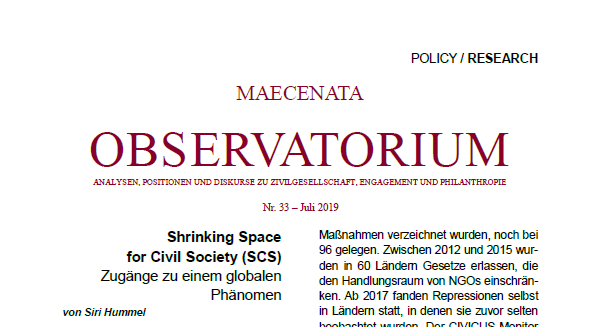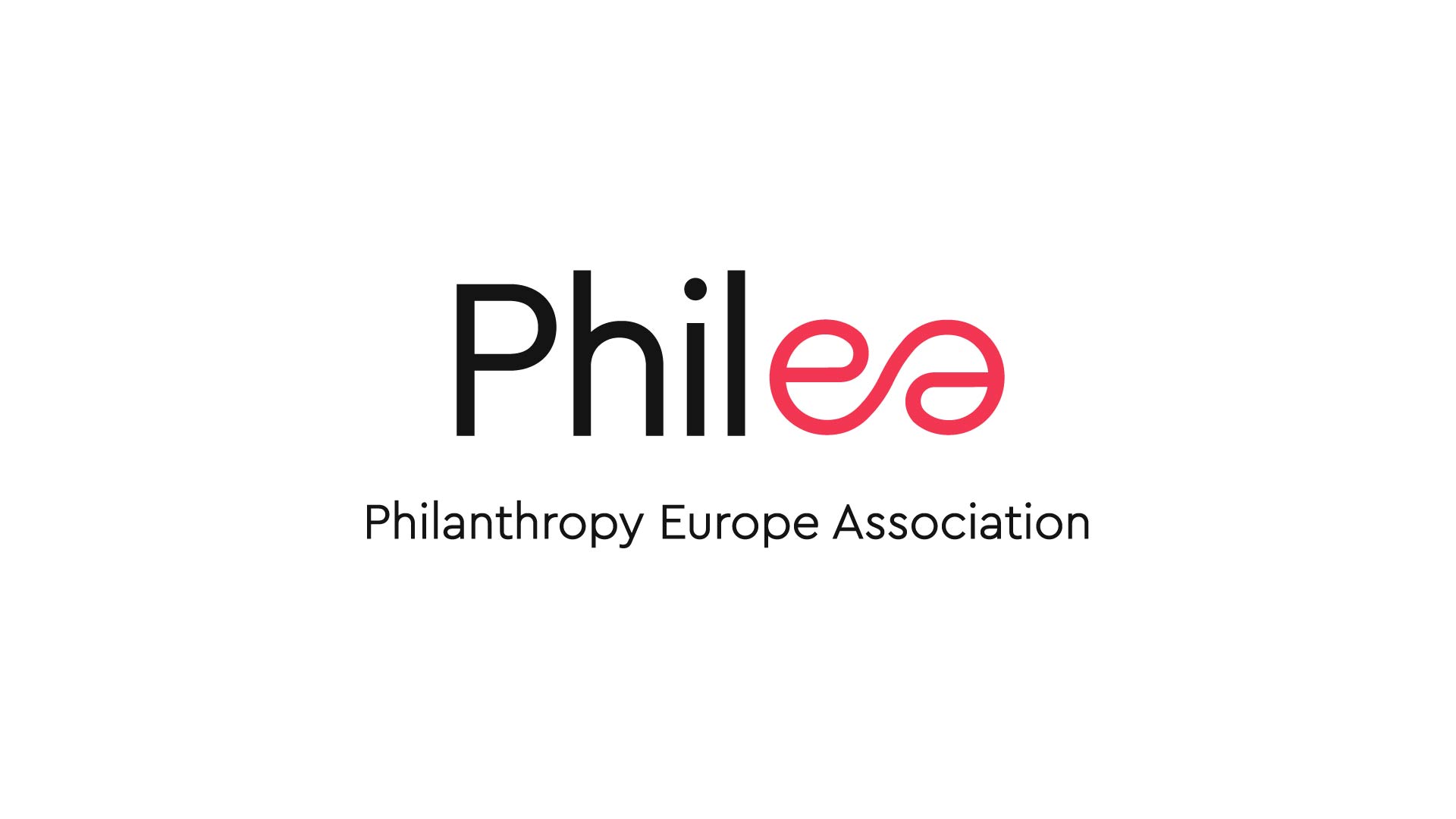Adressing Europe´s Issues
A Potential Model for Cross-Sector Collaboration
Observatorium 32 | 01.06.2019 | Europe, like other regions, individual countries, and the world as a whole, is dealing with a plethora of “wicked problems.”. These problems and diverse societies need systemic solutions, solutions that are supported collaboratively by government, the private sector and civil society (philanthropies and NGOs).
Europe, like other regions, individual countries, and the world as a whole, is dealing with a plethora of “wicked problems.” The term wicked problems was first defined in the 1970s1 and more recently utilized by social (behaviour change) marketers to describe difficult, long-standing, complex, multi-causal and seemingly intractable societal problems. This term can easily be ascribed to many issues we in Europe are dealing with every day – climate change, the environment, immigration, jobs, employment, etc. These may be some of the toughest problems, and the ones that commonly appear on top ten ‘issue” lists from European-wide polls, but we also see many other societal problems right in front of our eyes everyday – poverty, poor education, bias, discrimination, health inequalities, etc.
At the same time, we are also seeing growing population diversity in many European countries. This diversity is not solely the result of large number of migrants fleeing political and economic hardship in the global south, but also stems from the millions of
EU nationals who for a variety of reasons, often economic, are moving to other countries in search of new lives and opportunities. Slowly, the seemingly homogeneous populations that helped define European nations and their cultures are shifting.
While some embrace the diversity for a host of reasons, others challenge it and long for the “good old days.” The bottom line is that Europe is changing and that there is no immediate stop in sight. And while wicked problems were hard to solve when countries had more homogeneous populations, greater diversity typically means differing knowledge, attitudes and behaviours towards issues, less consensus, and greater need for dialogue and discussion. All this change raises the questions, “Is Europe becoming more like US in terms of diversity in population, and if so, what can it learn from the US, a society built upon centuries of immigration waves, in addressing wicked problems?”2
One thing is for sure, wicked problems and diverse societies need systemic solutions, solutions that are supported collaboratively by government, the private sector and civil society (philanthropies and NGOs). In theory, the three sectors have great power to address societal issues when each sector does it through the means they know best: governments create and promote good policy, businesses provide insights, innovations and stimulate economic growth, and civil society connects people with social services, support and civic action more broadly. When each sector is able to contribute collectively to a wicked problem, positive social change is likely to happen.
In practice however, these collaborations are typically hard to coordinate. All too often the goals of planned initiatives are not clearly defined, and partners can fall back into a “what’s in it for me” attitude. Then there’s language – organizations in each sector create their own cultures and with it, their own language and ways of talking about issues and ideas. As a consultant to all three sectors, I find it often takes me two or three meetings with clients to truly understand and convey back to them what I understand their needs to be in their own language. And then there is always the issue of trust. Well-functioning cross-sector partnerships require trust and patience from its participants. Trust takes time, commitment, and a lot of work and can be hard to achieve with tight deadlines, limited facetime and busy participants.
One organization that has had some success in making cross-sector partnerships work for decades is the U.S.-based Ad Council. Itself an NGO, it works with U.S. federal government agencies, other NGOs and the private sector to create and promote campaigns on important social issues facing the American public. Founded by President Franklin D. Roosevelt as the War Advertising Council in 1942, the organization tapped the talents and resources of the advertising and media world to get Americans to support the war effort through such memorable campaigns as “Rosie the Riveter,” “Plant Victory Gardens” and “Loose Lips Sink Ships.” The organization lost the “War” part of its moniker after WWII but has continued to focus on issues of importance to the American public, such as health, safety, the environment and community engagement over the last 70+ years.3
From a financial perspective, the Ad Council is able to leverage a relatively small investment from its NGO and government campaign sponsors as its media company partners donate their excess inventory and its advertising agency partners donate their staff time (as well as negotiate discounted rates from production companies, research firms, etc.). The government or NGO sponsor pays a management fee for the Ad Council’s stewardship and management of the campaign and the balance of the Ad Council’s budget is raised through corporate donations, including an annual gala dinner which is underwritten by the commercial sector.
What’s most interesting about the cross-sector partnership model that the Ad Council maintains is the incentive and benefit that each sector reaps from the partnership. Let us look at the long-standing drunk-driving prevention campaign as example of this tri-sector work. In this case, the government agency involved is the U.S. Department of Transportation. Charged with keeping American roads and highways safe and functional, among other responsibilities, the federal agency brings issue knowledge, data, policy, and professional standing to the campaign. What it gets from the campaign is a better educated public and a much lower cost, citizen-facing campaign than it would be able to create on its own.
Looking at the commercial partners, the ad agency involved in the campaign brings its expertise in understanding consumer insights and innovative ways to engage audiences with the cause. The benefits they gain from the campaign are a bit more self-serving in that the campaign serves as a corporate social responsibility (CSR) program for the agency; there is typically great interest in and competition internally to work on these campaigns as they often allow teams to develop more creative and cutting edge campaigns as compared to their typical corporate client work. Moreover, they can use the campaign work they have created for the Ad Council in their own promotional materials to attract new commercial clients.
The media companies, especially those with larger, diversified holdings or those working in social media, can bring very targeted media offerings to reach campaign audiences. They also can promote their donated media space or time as a form of CSR. While there were formerly federally mandated public service requirements which required broadcast media companies to provide a certain amount of donated air time for public issues, these requirements have been lifted. However, the tradition of donating space and time has continued as media companies know that the ads they receive from the Ad Council are of high quality, are relevant to their audiences and associate their companies with these important causes. The companies can also use their public service record as a demonstration of their goodwill when lobbying the government on business-related matters. The Ad Council’s long-running drunk-driving prevention campaign has helped to reduce drunk driving car crashes by a third over the last thirty years. It has evolved over time in terms of message and target, with a focus on newer targeted initiatives on ‘’buzzed driving” (driving while slightly intoxicated but not over legal blood alcohol minimum thresholds) and younger drivers who drink. Recognizing the diverse population of the U.S., the Council has also created targeted campaigns for the larger Latino and African American minorities in the country. Ad Council staff often talk of their efforts as the “final mile” in social change efforts – how these communications campaigns support policies, programs and other interventions that its government and NGO partners develop.
Although similar organizations based on the Ad Council model already exist in Japan and Jamaica, I cannot say whether this kind of organization and these types of campaigns would be successful in Europe. The Ad Council is successful in the U.S. as it operates in a society with a relatively weak social safety net, while government ministries in Europe tend to have more developed programs and support for many of these social issues. European attitudes towards marketing and advertising overall tend to be less welcoming and many in Europe view marketing more critically than those in the U.S.
There is also the question of the model itself and whether a centralized organization for Europe would work. The Ad Council donated media and ad agency pro-bono model works thanks to its historical precedent and tradition. When the U.K.’s Central Office of Information (COI) which had been tasked with producing public education campaigns for the various ministries was winding down its efforts about 10 years ago, ad agencies and media companies balked at the suggestion of providing pro-bono media and advertising services a la the Ad Council model as they had been getting paid for their efforts all along. Similarly, would this kind of initiative work better with a centralized (pan-European) or decentralized (country by country) organization? While there are numerous examples of successful international campaigns for various brands and issues, it is always easier to reach individuals with initiatives created by local experts for local audiences.
Returning to my original thesis about the wicked problems a growingly diverse Europe faces, perhaps the bigger question is how cross sectoral partnerships could be created and developed to help these issues. I for one would be interested in seeing more cross-sectoral initiatives and partnership organizations created based on the talents and contributions of the three sectors, and a better understanding of the drivers that will get the sectors engaged in such work. And with Europe destined to grow closer together, there is no real reason why an initiative for cross-sectoral cooperation should not be able to operate at pan-European or at least at pan-EU level.
[1] Rittell and Webber (1973)
[2] See Agnes Heller, Paradox Europa. Wien/Hamburg: Edition Konturen 2019, p. 14-15
[3] See https://www.adcouncil.org/ for details






